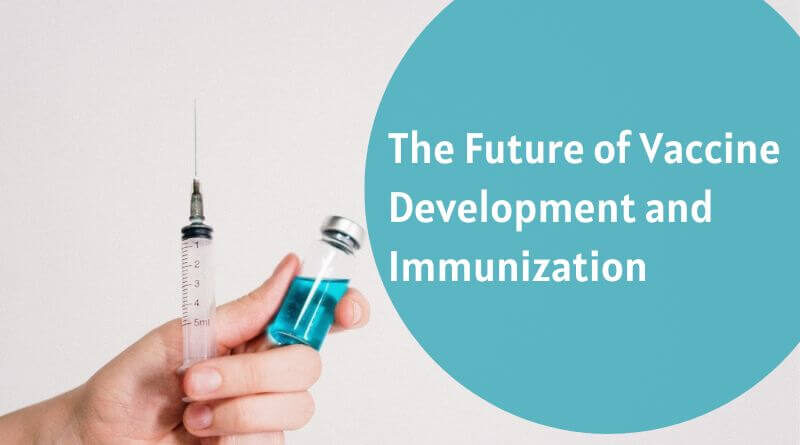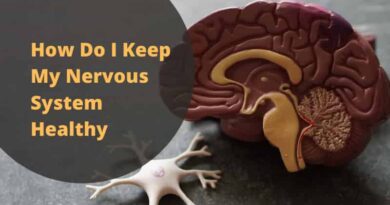The Future of Vaccine Development and Immunization
Remember how the world stopped when the Covid pandemic started back in 2019? Countless lives were lost as scientists rushed to find a cure. The scientific community worked tirelessly, and finally, on December 11, 2020, Pfizer-BioNTech made their vaccine available to the general public. Since then, over 12.7 billion doses of the Covid vaccines have been administered globally.
Since their inception over 200 years ago, vaccines have proved crucial to our defense against various pathogens. Vaccines have saved countless lives from simple infections like the common flu and even deadly diseases like Ebola. The administration of vaccines has significantly lowered morbidity and mortality rates that resulted from several infections.
Fundamentally, vaccines do this by eliciting an immune response in the host, leading to the development of antibodies. These antibodies are responsible for combating the specific pathogen the individual was vaccinated for.
Table of Contents
Traditional Vaccines and their Limitations
Traditionally vaccines are made by weakening a virus, also known as attenuation of the virus (As in the case of polio and Hepatitis A). The resulting weakened pathogen is unable to reproduce in the body. Due to its reduced number, it cannot cause an infection, and the body produces B- memory lymphocytes against it. Next time the same virus infects the body, the immune system quickly responds and fights off the infection.
Alternatively, only a part of a virus may be used in the production of the vaccines (As in the case of Hepatitis B and Shingles), where a specific part of the virus is responsible for the immune response.
Advancements in this front come in the form of GenCRISPR synthetic sgRNAs, a modern gene editing tool. What makes it revolutionary is the exclusion of the need for plasmids or a virus-based delivery system. Instead, intact complexes are delivered directly to the cell, eliminating the need for cellular expression. This latest advancement is particularly beneficial for these reasons:
- It is DNA-free
- It can be detected at high levels immediately following transfection
- It has a quick clearance rate from the cell
- It has improved efficiency
- It is best for in vivo studies
Conventional vaccines have their limitations.
- Not all viruses can be attenuated. Viruses like HIV cannot be weakened enough to produce a vaccine.
- Most vaccines cannot withstand elevated temperatures; hence storing and transporting them at a cool temperature is challenging.
- Traditional vaccines cannot be administered to an immunocompromised patient.
- They can only be made against organisms that grow in cultures. This is costly, and the vaccine yield is also very low.
The Need for Innovation
As Pharmaceutical Companies develop newer vaccines, an effort is being made to make them more accessible.
Researchers aim to make vaccines that are
- Safer
- Require a lesser number of doses.
- Easier to manufacture.
- Easier to store and transport.
The Future of Vaccine Development
Following the Covid- 19 outbreak, the private sector invested heavily in vaccine development-related research. This has led to breakthroughs in this field. Here are some of the possible innovations.
Nucleic Acid Based Vaccines
In this method, DNA coding for a specific antigen is engineered into a plasmid and injected into the cell. The cell then produces the antigen from the genetic code it received. The rest of the process is the same as with traditional vaccines. An immune response is produced from the antigen generated by the cell.
A nucleic acid-based vaccine would be easy to produce. However, this is still experimental, and no nucleic acid-based vaccine has been cleared for human use.
mRNA Based Vaccines
RNA vaccines work by delivering an mRNA sequence to the cell. This sequence codes for a molecule similar to the antigen, and the cell’s machinery produces the protein molecule. The body recognizes the cell as a foreign object and initiates an immune reaction.
mRNA-based vaccines have several advantages over traditional vaccines. They are both cheaper and faster to produce. And since no actual part of the virus is being used, it is also safer than using attenuated or dead pathogens.
The recent Covid-19 vaccine was also an mRNA-based vaccine.
Live Recombinant DNA
In this technique, an artificially generated DNA sequence coding for the antigen is inserted into a vector. The vector can be a bacterium or virus and acts as a medium to deliver an immunogenic protein from another infectious agent. This vector is then injected into the individual. An immune response is generated against the antigen as the antigen expresses itself. This technique allows an individual to develop immunity against two infectious agents. It is important against infections such as HIV, which can otherwise not be combatted.
Non-Replicating Viral Vectors
Genetic material is often delivered into cells with viral vectors. The introduction of viral vectors in the body generates the same sequence of events as an attenuated virus. An immune response is generated, and the body develops immunity to the antigen coded into the viral vector.
Virus-like Particle Based Vaccine
Virus-like particles (VPLs) are molecules that resemble viruses but contain no viral genetic material. Hence, they are safe for humans, and an immune response is generated to the surface proteins of these VPLs.
Innovation in Vaccine Delivery Systems
Strides have not only been made in vaccine development but also vaccine delivery systems. With phobias such as trypanophobia (fear of needles), there will always be a certain population that will be hesitant to receive syringe-delivered vaccinations.
Some vaccines, such as those for polio, are available as oral suspensions. The nasal route for delivering influenza vaccine has also been tested successfully.
However, the next innovation in the vaccine delivery system comes in the form of micro patches. Compared to the traditional delivery system, micro patches have several benefits:
- Ensuring an intermittent release of the antigen molecule
- Cheap and easy to the manufacturing process
- Inexpensive storage and transport
- Better accessibility in rural areas
- Painless, resulting in better acceptability by patient
To counter the heat resistance problem with many vaccines, scientists have developed a filter-like membrane that can coat the vaccine vial. This way, viruses could be stored at 113F for up to six months, making them available to previously inaccessible areas.
Conclusion
Pathogens are everchanging. This requires a continuous effort to combat them. Scientists are constantly working to develop more effective and efficient vaccines that can conveniently reach the most remote areas and give humanity a chance to fight.
We’re saving more lives than ever, thanks to innovations like these. Let’s wait and see what other breakthroughs will be made in the future.
Recommended Articles:
How to Deal with The COVID Testing Scare?
Places You Are Susceptible To Catch COVID-19




